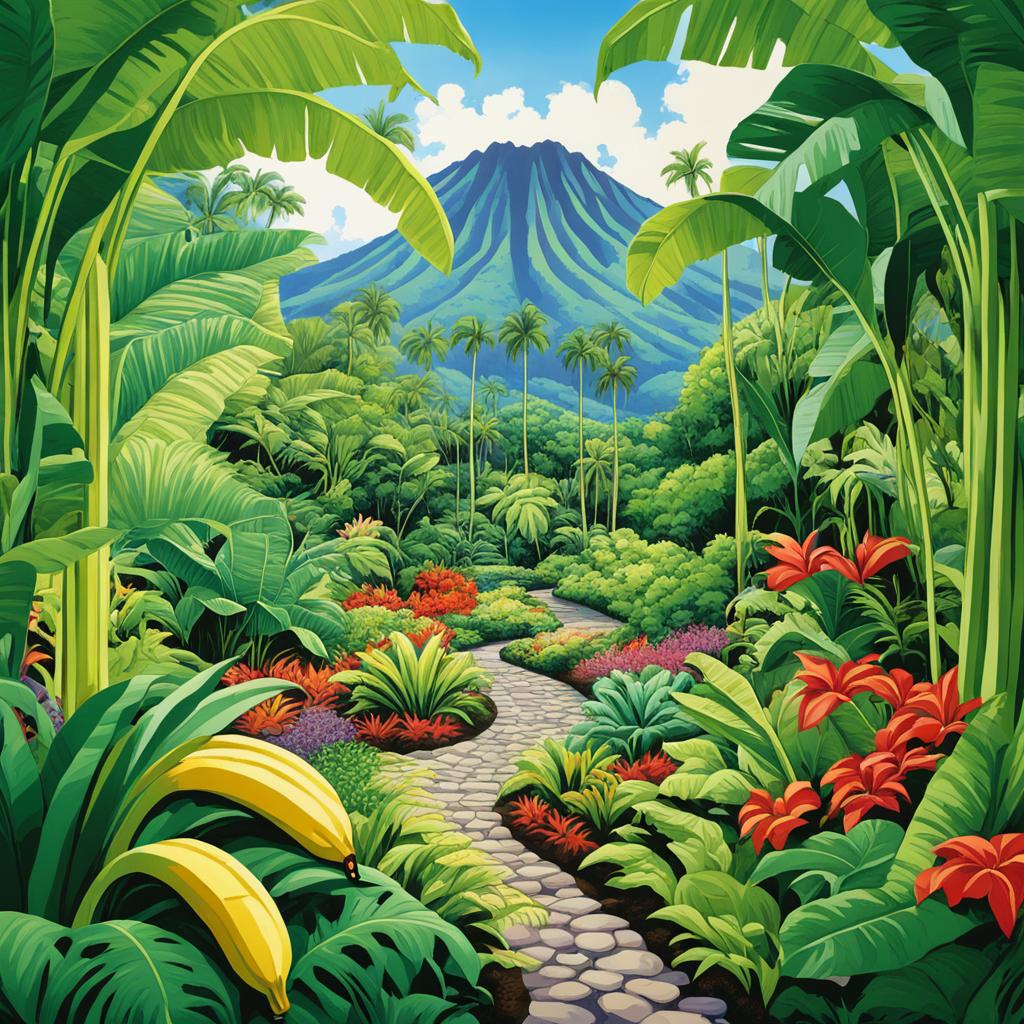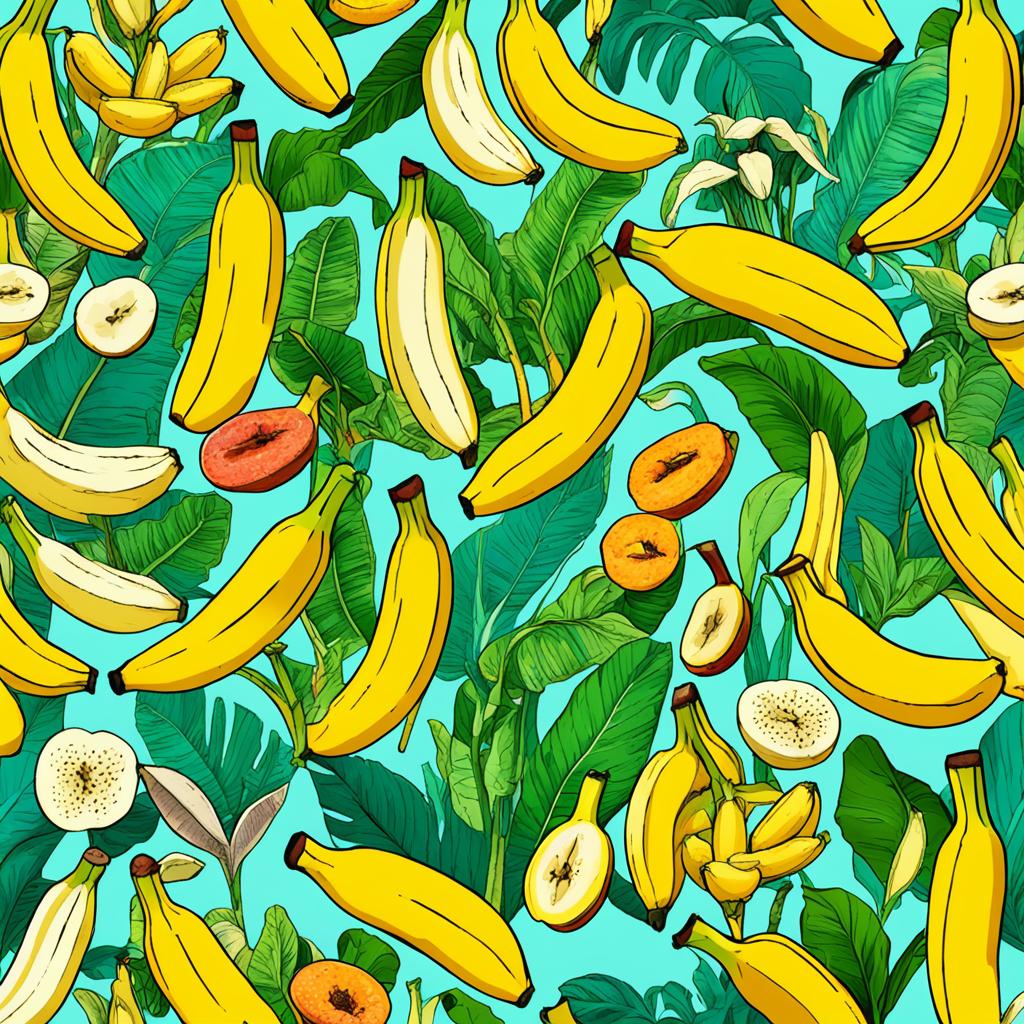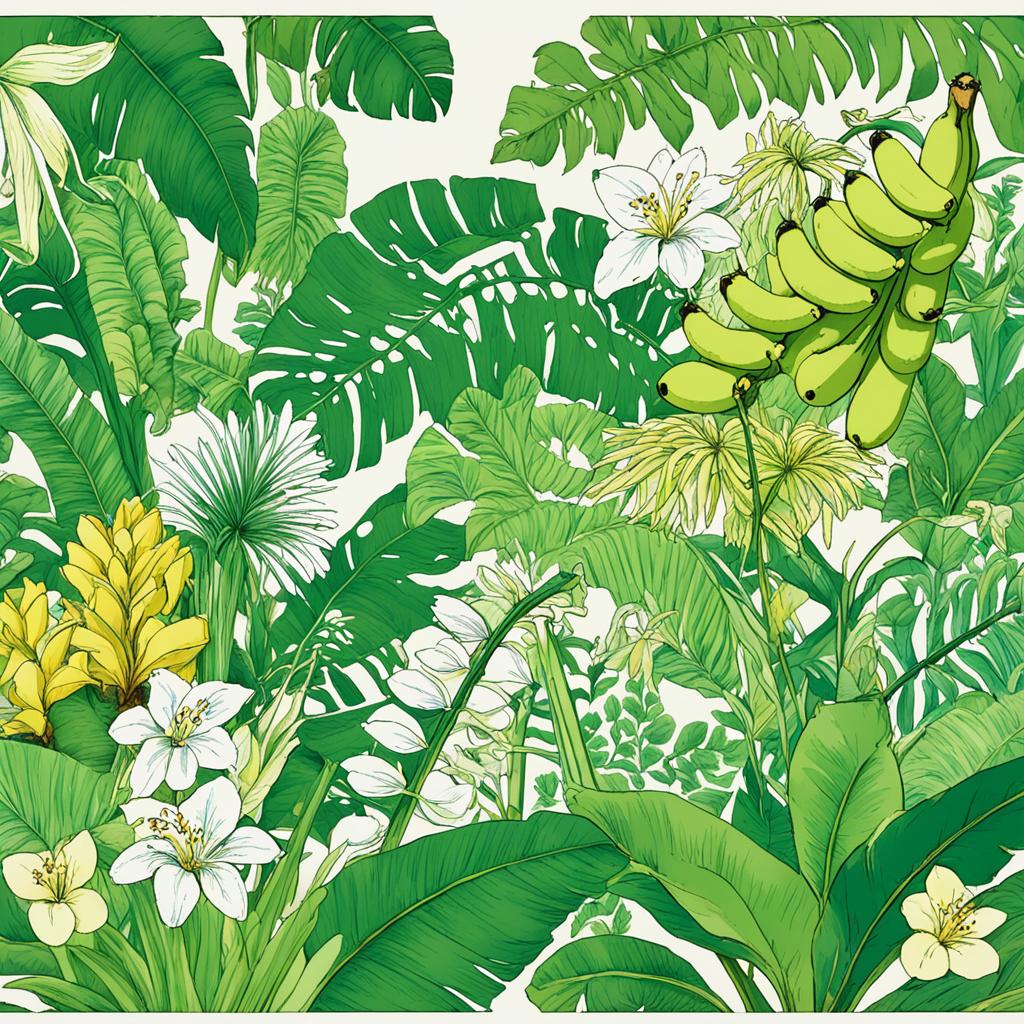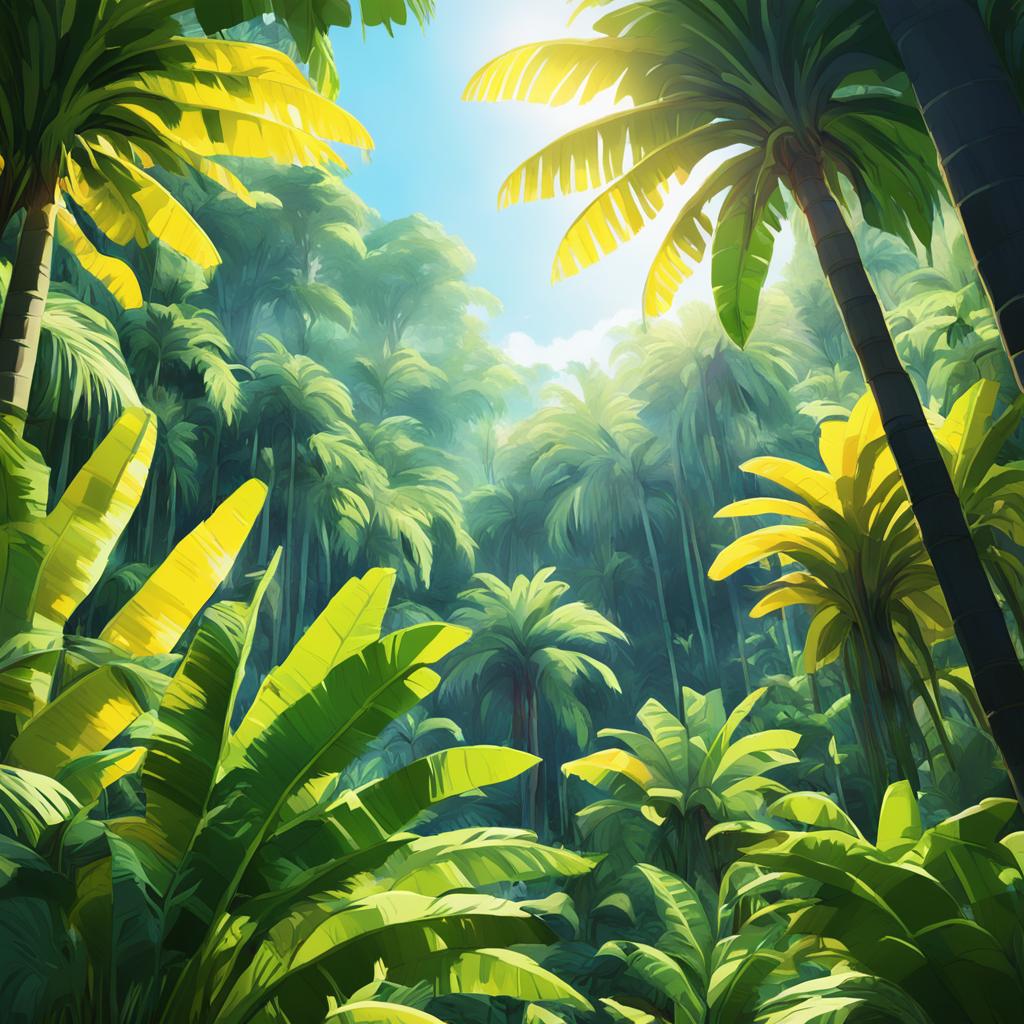When you think of Hawaii, images of lush tropical landscapes and exotic fruits may come to mind. But are bananas one of those native fruits? You might be surprised to learn that bananas are not actually native to Hawaii. However, there is a fascinating history behind the presence of bananas on the islands.
In “The World of Bananas in Hawai’i: Then and Now,” it is revealed that most of the bananas currently grown in Hawaii were introduced after 1850. These familiar varieties were brought to the islands, but they are not native. Interestingly, bananas were first introduced to Hawaii by Polynesian seafarers between 200 and 1350. These ancient banana varieties, such as Iholenas, Maolis, Popoulus, and Fei bananas, were domesticated in the Western Pacific and were not originally native to Hawaii.
While many of these unique banana varieties have since been replaced, there are still around 10,000 unattended banana plants growing “wild” in the forests of Hawaii. These naturalized bananas serve as remnants of ancient Hawaiian culture and have managed to survive in inaccessible valleys. The decline in the cultivation of Pacific bananas is not unique to Hawaii, but preserving and reviving these native varieties is important for both cultural and botanical heritage.
So, what is the significance of the non-native bananas in Hawaii? And how are organizations like the National Tropical Botanical Garden (NTBG) working to protect and preserve these unique banana cultivars? Let’s delve deeper into the topic and uncover the intriguing stories behind bananas in Hawaii.
The Banana Collection at Kahanu Garden

Kahanu Garden, located in Hāna, Maui, is home to the Pi‘ilanihale Heiau, the largest archaeological structure in the Hawaiian Islands. The garden houses a valuable collection of mai‘a (banana) varieties that reflect the agricultural customs, lore, and uses of Pacific Island and Hawaiian heritage. These varieties were carefully transported across the Pacific and have cultural significance as food, building materials, medicine, and ceremonial offerings.
The collection at Kahanu Garden showcases the diversity of Hawaiian bananas, with varieties like ‘Pōpō‘ulu Huamoa’ and ‘Iholena ‘Ūpehupehu’ displaying unique characteristics. The National Tropical Botanical Garden (NTBG) aims to protect and preserve these rare banana cultivars and other Hawaiian canoe plants to safeguard Hawaii’s ethnobotanical and cultural heritage.
By preserving the banana collection at Kahanu Garden, the NTBG ensures that generations to come can appreciate the rich Hawaiian heritage and the importance of these plants in the island’s culture.
The Importance of Diversity in Banana Cultivation

While bananas have become a widely consumed tropical fruit globally, there is often a lack of awareness about the existence and need for protection of diverse banana varieties. Most commercially grown bananas, such as the Cavendish group, have genetic uniformity, which leaves them vulnerable to diseases like the Fusarium wilt strain TR4. Large-scale agricultural systems that prioritize a single variety for economies of scale can lead to the loss of unique habitats, ecosystems, and major food crops.
Preserving genetic diversity in banana cultivation is crucial for sustainable agriculture and combating the negative impacts of diseases and ecosystem displacement. The National Tropical Botanical Garden (NTBG) recognizes the importance of looking to the source, as emphasized by Hawaiian elders, and continues to document, collect, and protect diverse banana varieties for future generations.
By preserving a wide range of banana varieties, we can ensure a resilient agricultural system that can better withstand the threats posed by diseases and climate change. Genetic diversity not only offers natural resistance to diseases but also contributes to the overall health and stability of ecosystems. It allows for the conservation of unique traits and flavors that might otherwise be lost. Additionally, diverse banana varieties have the potential to provide economic opportunities to smallholder farmers and promote sustainable livelihoods.
Benefits of Genetic Diversity in Banana Cultivation:
- Enhanced resistance to diseases and pests
- Increased adaptability to changing climates
- Preservation of unique flavors and traits
- Conservation of cultural and historical heritage
- Support for local economies and smallholder farmers
By recognizing the importance of genetic diversity and actively working to protect and promote diverse banana varieties, the NTBG is contributing to the preservation of both our agricultural systems and cultural heritage. Through research, education, and conservation efforts, we can ensure that future generations have access to the rich diversity of bananas and the benefits they provide.
| Key Points | Summary |
|---|---|
| Bananas with genetic uniformity | Vulnerable to diseases and ecosystem displacement |
| Preserving genetic diversity | Sustainable agriculture and resilience |
| NTBG’s role | Documenting, collecting, and protecting diverse banana varieties |
| Benefits of genetic diversity | Resistance, adaptability, cultural heritage, and economic support |
Conservation Efforts at National Tropical Botanical Garden (NTBG)

The National Tropical Botanical Garden (NTBG) is dedicated to preserving the rich cultural heritage and biodiversity of Hawaiian canoe plants, including bananas. With the looming threat of extinction faced by many rare varieties, the NTBG has made it a strategic goal to collect and curate all existing cultivars, ensuring their conservation for future generations.
As a safe haven for indigenous crop varieties, the NTBG plays a crucial role in safeguarding and sharing these plants with researchers, cultural practitioners, and the wider community. By focusing on specific collections in different gardens, such as kalo (taro), ‘uala (sweet potato), and mai‘a (banana), the NTBG contributes to advancing solutions for global hunger while protecting Hawaii’s ethnobotanical and cultural heritage.
The preservation of these valuable resources is essential not only for the survival of the plants themselves but also for the ecosystems they support and the cultural knowledge they embody. Through its dedication to conservation, the NTBG ensures that tropical regions continue to thrive with diverse plant life and the wisdom passed down through generations.
| Effort/Initiative | Description |
|---|---|
| Collection and Curation | The NTBG aims to collect and curate all existing cultivars of Hawaiian canoe plants, including bananas, to ensure their preservation and documentation. |
| Safe Haven | NTBG serves as a safe haven where indigenous crop varieties can be protected, propagated, and shared with researchers, cultural practitioners, and the wider community. |
| Partnerships | NTBG collaborates with local communities, organizations, and researchers to advance conservation efforts and knowledge sharing. |
| Educational Programs | The NTBG conducts educational programs and workshops to raise awareness about the importance of preserving Hawaiian canoe plants and cultural heritage. |
Through the NTBG’s comprehensive approach to conservation, the organization strives to ensure the survival of plants, ecosystems, and the rich cultural traditions associated with Hawaiian canoe plants. By dedicating resources and expertise to this vital mission, the NTBG contributes to the preservation of Hawaii’s natural and cultural treasures.
Growing Bananas in Hawaii
Hawaii offers an ideal environment for banana cultivation, attracting many passionate enthusiasts who have developed their collections of diverse banana varieties. One community that brings together these devoted banana growers is the Texas Fruiting Plant Growers, where knowledge and experiences are shared among members.
Successful banana cultivation in Hawaii has seen the flourishing of various varieties, including Dwarf Orinoco, Raja Puri, Brazilian, and Namwah. These bananas have adapted well to the Hawaiian climate, rewarding growers with abundant harvests and unique flavors.
The enthusiasm among banana growers spills over into meetings, where they often generously distribute pups (offshoots) to fellow enthusiasts. Moreover, they actively engage in trading, expanding their collections with new banana varieties and other tropical fruits, such as sugar apple, mangoes, and starfruit.
Although bananas are not indigenous to Hawaii, the state has become a welcoming home for this tropical fruit. With a passionate community of growers constantly exploring and expanding their collections, banana cultivation in Hawaii continues to thrive and contribute to the rich tapestry of tropical fruit diversity.


